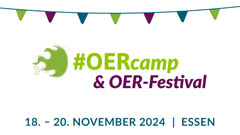Nokia Getting on Top of Handset Media Portability
 London (UK), November 2008 - Tony Cripps, principal analyst at Ovum, writes about problems of multimedia portability. He classifies the latest edition of Nokia's S60 as a good example with only minor shortcomings. Nokia has greatly extended the range of its multimedia codec support in the fifth edition of its S60 platform for the Symbian OS in an effort to overcome the problems of multimedia portability arising from codec proliferation.
London (UK), November 2008 - Tony Cripps, principal analyst at Ovum, writes about problems of multimedia portability. He classifies the latest edition of Nokia's S60 as a good example with only minor shortcomings. Nokia has greatly extended the range of its multimedia codec support in the fifth edition of its S60 platform for the Symbian OS in an effort to overcome the problems of multimedia portability arising from codec proliferation.
An important addition to the core is Microsoft's Windows Media Audio (WMA) format, which largely completes Nokia's audio codec support. However, some gaps still remain: notably the DivX Internet video codec and the popular open source Ogg family.
Nokia's effort to continue extending its media and codec support in the S60 is a very positive move, and one that consumers will benefit from whether they are aware of the problem of media portability or not.
It's all very well for device vendors not to worry about multimedia portability - i.e. the ability to play back a media file on different devices without having to re-encode them first - if media is consumed within a largely closed ecosystem (Apple's being the most obvious) or if the user has no intention of moving beyond that environment. However, for a very large proportion of users, neither eventuality is either desirable or practical.
Many of us living in the digital media age have either already built, or are in the process of accumulating, considerable libraries of media files in a sometimes bewildering array of formats. Transcoding them from one format to another to play back or display on different devices is a major undertaking.
If true media portability is to become a reality - and we believe it to be a cornerstone of enabling convergence - most consumers must instead rely on their devices, and by extension the manufacturers of those devices, to supply them with the tools to achieve media portability by pre-loading the necessary codecs on their devices.
The mobile phone industry in particular has been somewhat distanced from these broader trends. Nokia, to its credit, has recognised the importance of compatibility as an essential building block of convergence and is reacting accordingly. Its support for web technologies is another clear example of this.
Nonetheless, there are still a few gaps we would like to see plugged. One is the DivX video format, beloved of P2P content sharers but a legitimate format in its own right. Samsung and LG already offer DivX in some handset products (no doubt prompted by their wider consumer electronics interests), and Nokia would be wise to follow.
Second would be support for the popular Ogg format for audio and video. While this platform may not be as widely used as many of the others Nokia already supports, the groundswell of interest from the free software community in Nokia products arising from such a move would have some worthwhile knock-on effects in terms of PR.












